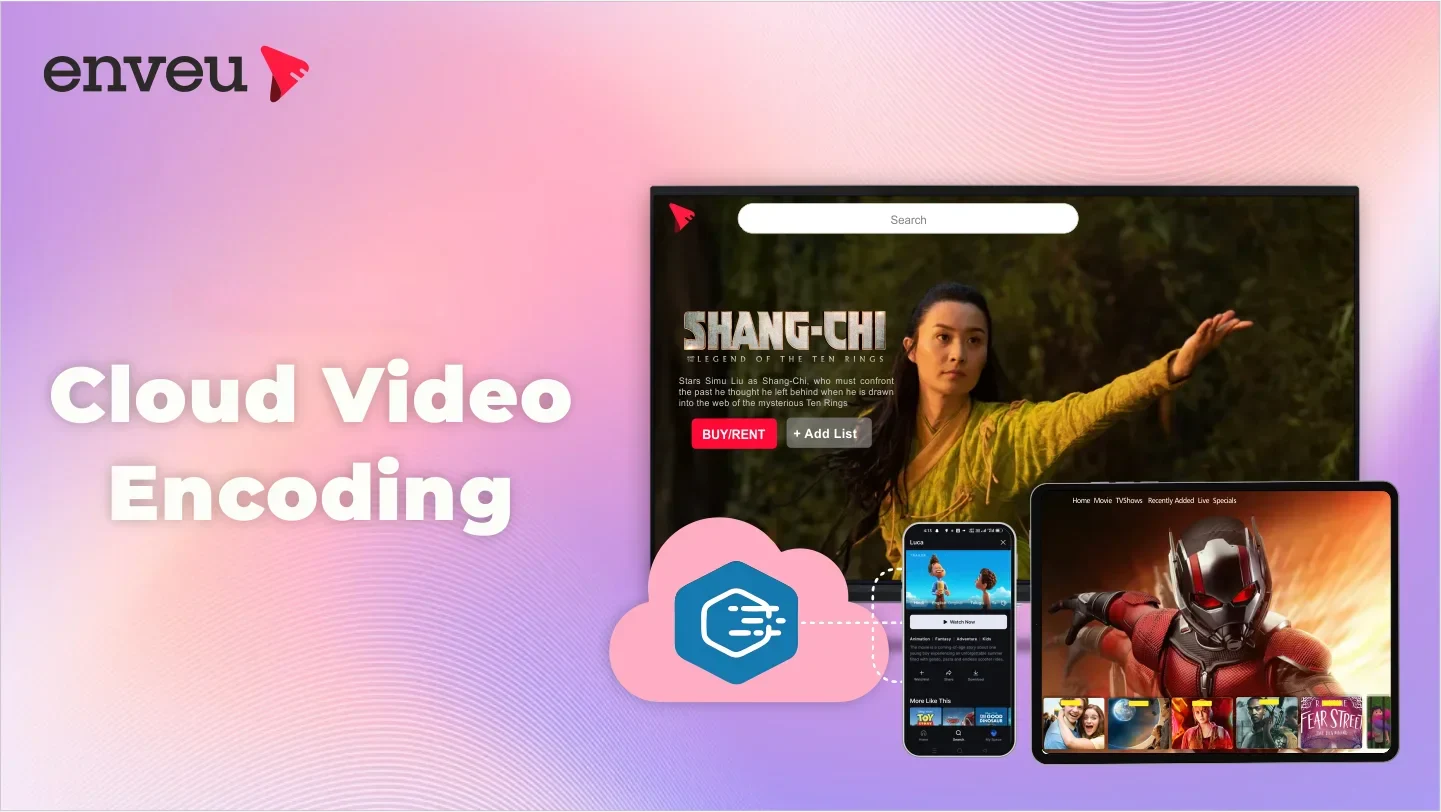Where mobile-centered content consumption rules the day, many smartphone users’ desire for smooth and crystal-clear video streaming is now at an unprecedented level. This rise in demand for screen-free, buffer-free viewing experiences has caused a seismic awakening among content providers. And this brings the necessity of extremely scalable cloud infrastructure to meet these expectations. Cloud Video Encoding is an integrated product that enables users to deliver interruption-free lightning playbacks.
Today, while the search for better streaming quality is heating up, this technology has become increasingly important in its contribution to the continuous delivery of unimpeded high-quality content.
This use of scalable cloud infrastructure represents a fundamental transformation in meeting the increasingly on-the-go demands for uninterrupted streaming brilliance from fed up viewers.
The blog aims to take readers deep into cloud video-encoding technology, highlighting its benefits and providing concrete real-world examples from companies across the nation. Let’s get started:
Table of Contents
What is cloud video encoding?

Cloud video encoding, a crucial element in cloud computing uses its powerful calculating capabilities to transform movie files so various media platforms can use them. This system will provide seamless accessibility across different devices, browsers and operating systems but without incurring storage costs.
The one thing that makes it different is its adaptability. Depending on the changing demands, this product can be dynamically adjusted so as to provide good scalability.
This budget-conscious, flexible approach maximizes convenience and compatibility, making cloud video encoding an indispensable answer for content providers in the digital age.
How does cloud encoding work?
Basically, cloud video encoding is the process of transforming raw videos into different formats that are compatible with nearly every imaginable device and browser. This transformation allows videos to be available and playable on various platforms without any loss in quality.
1) The Inner Working Process of Cloud Video Encoding
- Input Stage: Preparation of Raw Video
- The process started with the uploading of raw video data into cloud.
- Videos uploaded and processed, ready to be encoded.
2) Encoding Process: Transforming Videos
- Compression techniques are used to compress video data without a loss in quality.
- Different formats, resolutions and bitrates Videos are encoded into different forms by codecs (H.264, H.265 QVP9).
3) Adaptive Bitrate Encoding: Customizing for Diverse Networks
- This adaptive bitrate encoding guarantees smooth playback no matter what the network conditions.
4) Packaging and Delivery: Making Videos Accessible
- The encoded videos are wrapped into streaming formats, such as HLS (HTTP Live Streaming) or DASH (Dynamic Adaptive Streaming over HTTP).
- These packaged videos are disseminated to end users by cloud servers in an efficient manner.
Benefits of cloud video encoding:
Thanks to Cloud Video Encoding, video content is more manageable and powerful than ever before. Let’s explore some of the most critical benefits this innovative technology brings to the table:
- Economical Solution: There is no advance financial commitment and there is zero initial capital investment. Therefore, firms don’t need to ask your bank manager for a huge loan before they can make a start on their cloud journey. Human resources are in the right places and ready to go.
- Enhanced Accessibility and Flexibility: Anytime and anywhere a web browser on any device will get your precious data. As accessibility has increased, all the needed information can be found nearby. Besides promoting remote work, it also makes for more connectivity and convenience between devices and locales.
- Swift Deployment: Benefit from the opportunities that cloud servers provide by rapid deployment through net methods. This streamlining setup mechanism allows cloud-based services to come up quickly, sometimes even in a day or just several hours. This flexibility allows businesses to move quickly and adapt readily in the face of changing expectations and market cycles. When migrating quickly to the cloud, organizations can add or release resources according to their workload needs (or when market conditions change rapidly). This tends to speed up our operational readiness, but it also gives businesses resilience and agility, which are excellent features in a world of great change.
- Limitless Scalability and Adaptability: Use the cloud’s infinite potential to expand and develop. Scaling resources as needed means that companies can perceive unexpected traffic volumes or change requirements, and immediately respond. Unlimited scalability means that the traffic always keeps up with business, so agility and system performance can be continuously adjusted.
Real-life instances of companies helped by cloud video encoding:
Let’s delve into concrete examples showcasing the transformative impact of cloud video encoding in the realm of telemedicine:
The days of long-distance travel were a thing of the past for patients–they could receive professional medical advice right from health experts, where they were living & working. In addition to cutting down on the time needed when action is required, it has also enabled healthcare providers to receive treatments that had never previously been possible.
In a similar success story, an educational platform used cloud video transcoding to change the face of remote learning.
By using this technology, the platform thus allowed secure, high-quality transmission of video which made real-time monitoring possible for students’ activities and progress. Teaching associates acquired the ability to monitor students from a distance and interact with them.
This development pointed to the capability that cloud-based technologies could bring, suggesting a new shape of education with versatile, interactive and accessible learning environments.
Another example of this technique occurs on the popular streaming platforms, which employ cloud video encoding to provide smooth high-quality experience with no buffering interruptions.
This technology enhances video delivery across devices and networks, changing how consumers view & experience content.
Wrapping Up
With cloud video encoding at its foundation, today’s forms of video delivery exist to provide guaranteed compatibility and supreme quality on a variety of digital media. This technology helps users to witness change, with its agile and flexible processes. And this process is combined with the redundancy & efficiency of cloud infrastructure that has ushered in a new era for video production across multiple platforms and industries.
